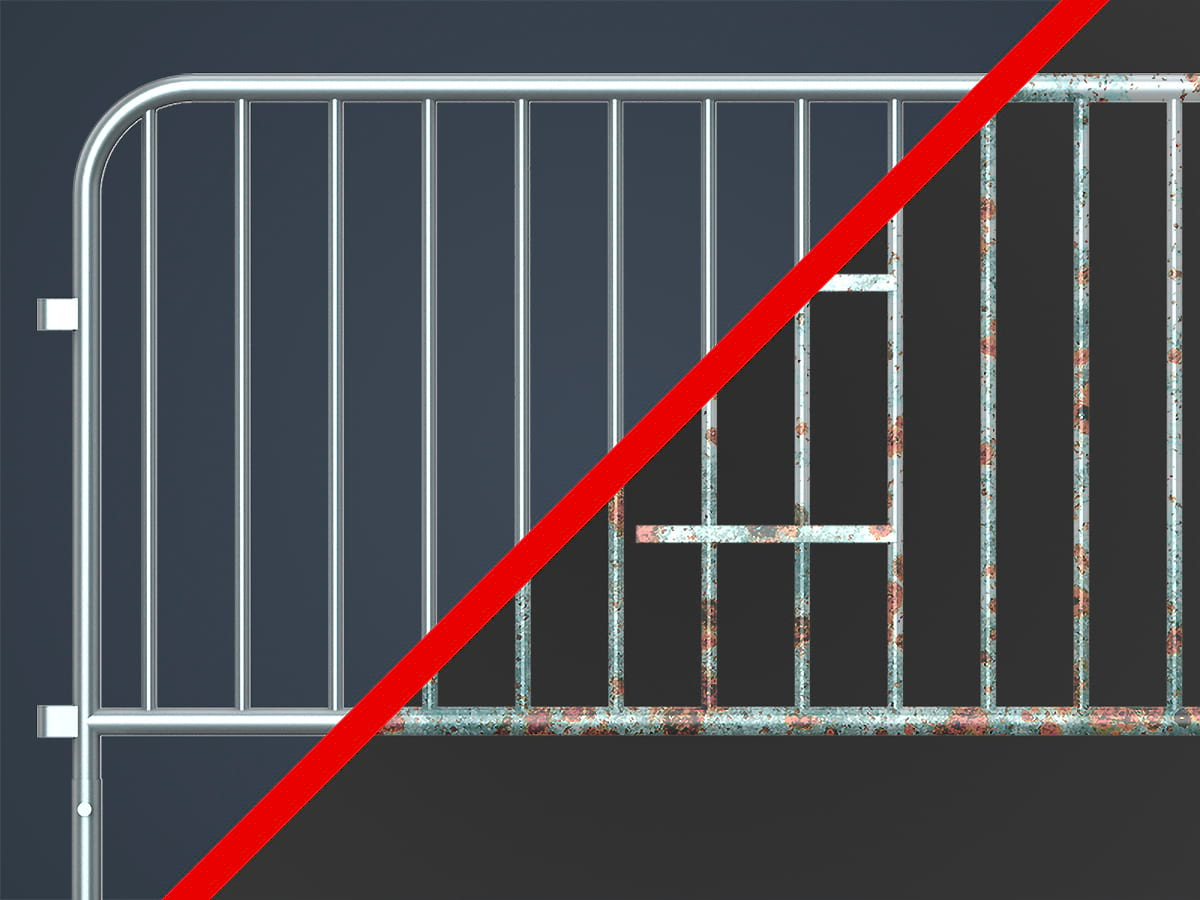Table of Contents
Table of Contents
Introduction: What is Galvanized Iron?
Galvanized Iron is iron with a protective zinc coating on the outside. By coating the iron with zinc, the material is well protected from corrosion, something that iron by itself is known to struggle with. This is critical as rust/corrosion will eat away at the exterior and core of the iron causing structural integrity issues.
How it's Made
Hot Dip
The hot-dip method involves submerging the Iron surface into molten zinc. Before the Iron is placed into the molten zinc, it must first be chemically cleaned to remove any surface impurities. The iron is then submerged into a highly concentrated zinc bath (~95%+ pure). While in the bath, the zinc and Iron metallurgically bind together to form metallic layers, with the zinc preventing corrosion to the inside Iron.
Cold Dip
Another method is cold-dip galvanization, which involves coating the outer layer of iron with a zinc-rich paint. The paint can be applied from a variety of methods from hand brushes to spray guns. Another cold method of application is electrogalvanizing, which is similar to electroplating, in that zinc is used as the anode to electroplate the iron metal, providing a strong bond between the zinc and Iron layers.
Advantages vs. Disadvantages
| Advantages | Disadvantages |
|---|---|
|
|
Galvanized Iron provides three main benefits in terms of corrosion protection and longevity. The first is barrier protection, where the zinc layer provides a physical barrier between the atmosphere and Iron. The second is cathodic protection, where the zinc layer undergoes oxidation in order to prevent the inner iron layer from oxidizing (rusting). The third protection is the zinc patina, also known as the oxidized zinc layer, which provides an additional layer of protection from the environment.
Applications
Galvanized Iron has a variety of application from structures to nuts/bolts. It is used almost everywhere because of its protection against corrosion and its longevity against the elements. Although Galvanized Iron is fairly common, its similar counter part, Galvanized Steel, is used much more often because of its strength benefits over Iron. It is used in structures like bridges, buildings, streetlights, etc for its recyclable properties and corrosion resistance. Furthermore, it is used in nuts, bolts, washers, etc so that any joints that are held together don't experience corrosion overtime.
